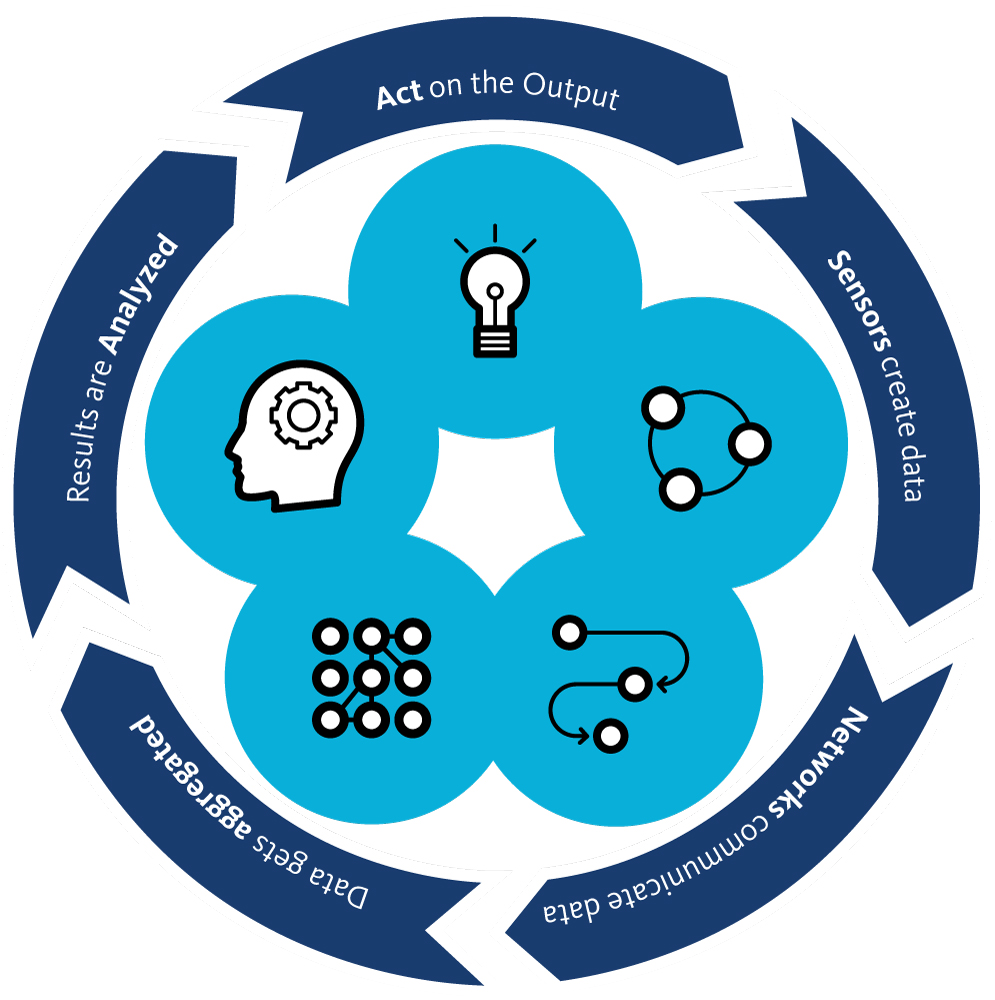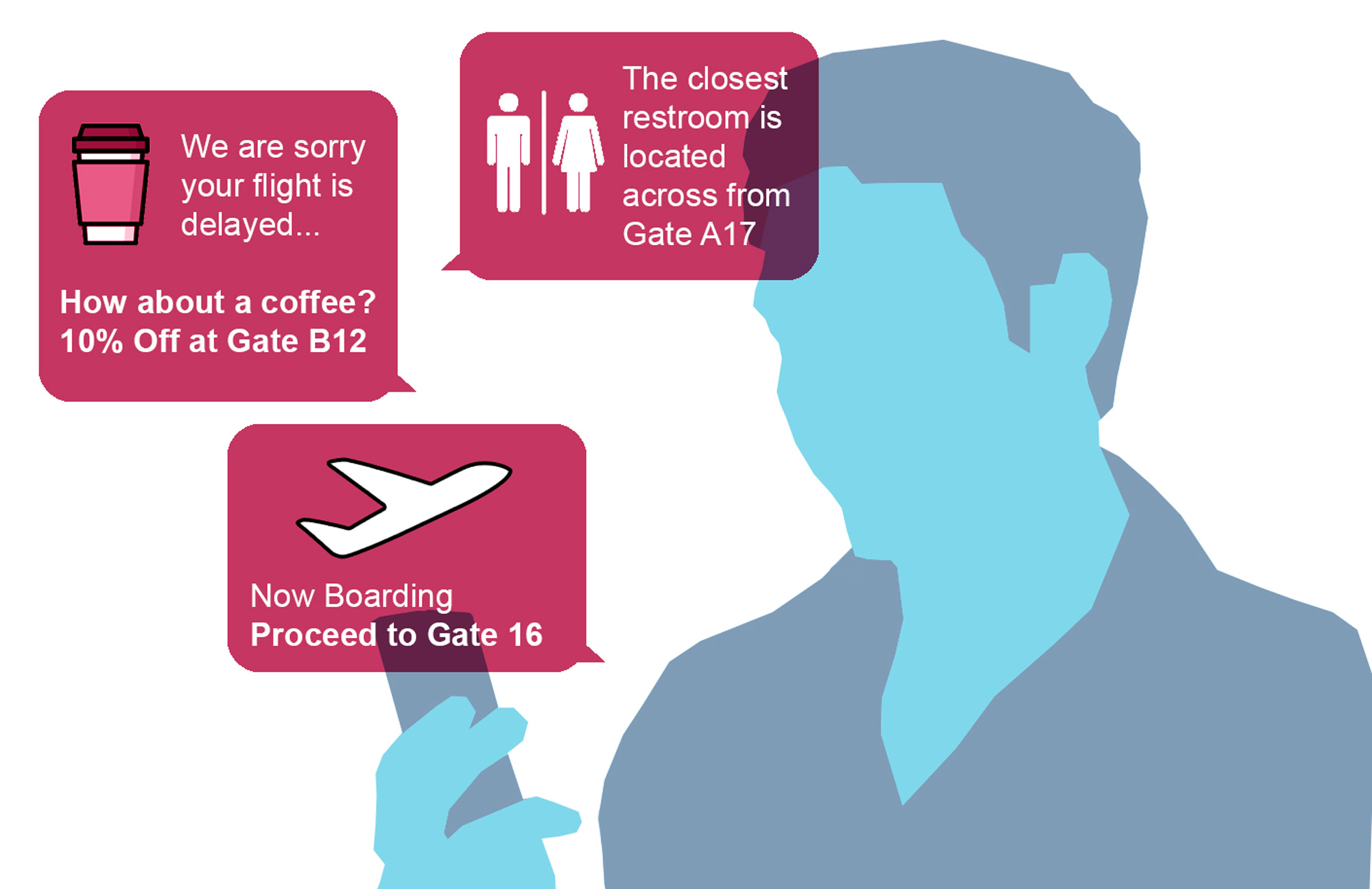The Promise of the Internet of Things in an Airport Environment
By Tim Hudson
As everything from our phones, to our watches, homes, and cars get smarter, airports are striving to keep pace. From motion sensors that turn lights on and off depending on human presence, to Radio Frequency Identification (RFID) tags that accurately track baggage through the airport and on to its final destination, the Internet of Things (IoT) has matured significantly over the past two decades. In the competitive scramble of airlines and airports to differentiate themselves by improving operations and customer service, IoT has emerged at the forefront of strategic development.
How does the Internet of Things work?
The Internet of Things is an overarching concept that describes multiple technologies working seamlessly in concert to improve a collective system. In the aviation industry, this means “connected airports” are quickly becoming a reality. Like other “smart” spaces, a connected airport is essentially a terminal environment in which devices sense and transmit data that can be used to generate insights and continually improve airport operations and passenger experience.
The FAA’s Airport Cooperative Research Program (ACRP) recently issued Research Report 191, which gives airports a holistic introduction to the Internet of Things.
The report lays out the foundational framework for how the Internet of Things operates:
- Strategically placed sensors capture data about the physical environment.
- The information is communicated and aggregated.
- The data is analyzed for key insights.
- These insights result in implementations for improvement.

Where are we seeing IoT make the biggest impacts?
In the airport environment, connected devices and their wealth of data have led to significant improvements in operational efficiency. Much of the passenger experience is defined by issues such as baggage transportation and loss, security checkpoint experiences, and reliable high speed WiFi, IoT will be critical in alleviating airport-associated stresses on operators and travelers alike.
As IoT and connected devices continue to be integrated into the airport environment in more and more comprehensive ways, we can anticipate it having an unprecedented impact on the improvement and customization of the passenger experience.
At DFW International Airport, for example, sensors monitor the number of people in the security queue at any given moment and extrapolate real-time wait times. This data is automatically streamed to overhead monitors that keep passengers informed and reduce anxiety. Ultimately, this information empowers passengers to plan their own experience, allowing them to assess wait times for different security checkpoints as they arrive and plan their path to the departure gate.
Meanwhile, at Miami International Airport, beacon technology is currently being utilized to pinpoint every passenger’s location within a terminal. With a smartphone app, passengers are able to receive turn-by-turn directions to their gate or the closest amenity, like a bookstore, airport lounge, restaurant, or restrooms. As more airports turn to similar technology, passengers will only have to turn to their smartphones to gather their bearings and seek out their destination no matter where they are located.

Design Insights
There are two areas where airports will need to improve in order to maximize the return on investment promised by a fundamental reliance on IoT.
First, airports will need to find more ways to increase seamless communications and share information with passengers in real time. Whether through dynamic signage, interactive monitors, or smartphone technology, airports will continue to upgrade technological systems and develop creative ways to keep passengers informed of the important details of their impending journey. The ultimate goal, after all, is to constantly find ways to enhance the passenger experience through retail opportunities and increase concession revenue.
Second, airports will need to become more agile in order to respond to the enormous quantity of information that is continuously generated by the IoT’s sensor and beacon networks. The data collected can inform a variety of critical business and operational decisions, from staffing assignments and concession offerings to even larger, airport-wide infrastructural changes. The industry will have to be flexible, both from an operational and facilities perspective. As airports and airlines continue to evolve, adapt, and grow, the competition for passengers (and thus, revenue) will hinge on the convenience and ease they can offer — so focusing on elevating the passenger experience is critical to success.
In recent years, we have made vast advancements in how we collect data — the next step in the progress of IoT is how we use it. It is crucial that we continue to make strides in speed, and become far swifter in analysis of the data, making decisions based on the evidence and insights generated by our findings, and finally implementing those decisions quickly and efficiently, without disrupting the enormous complexities of a functioning airport environment.

